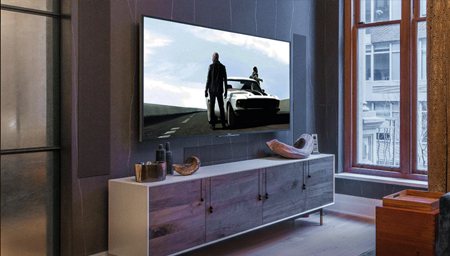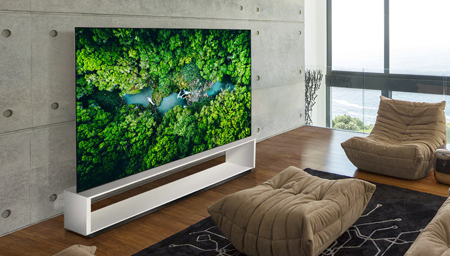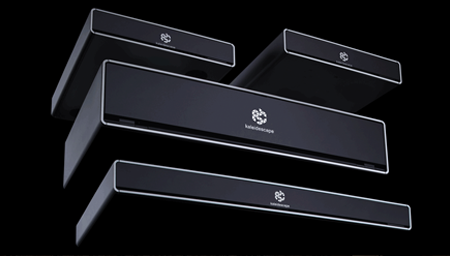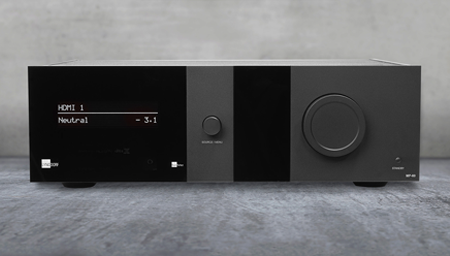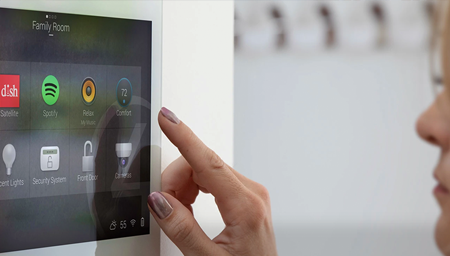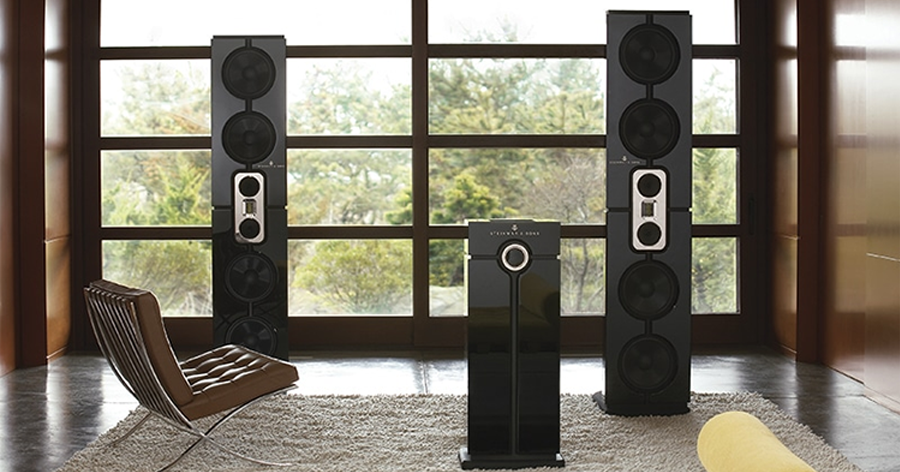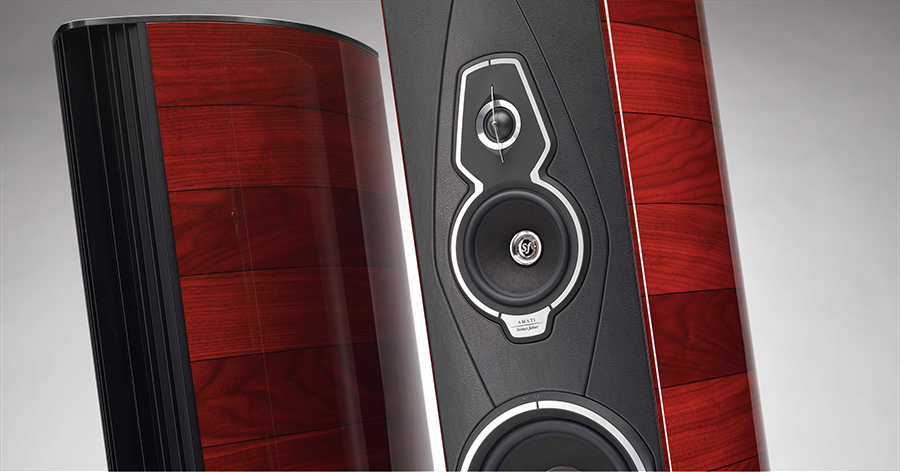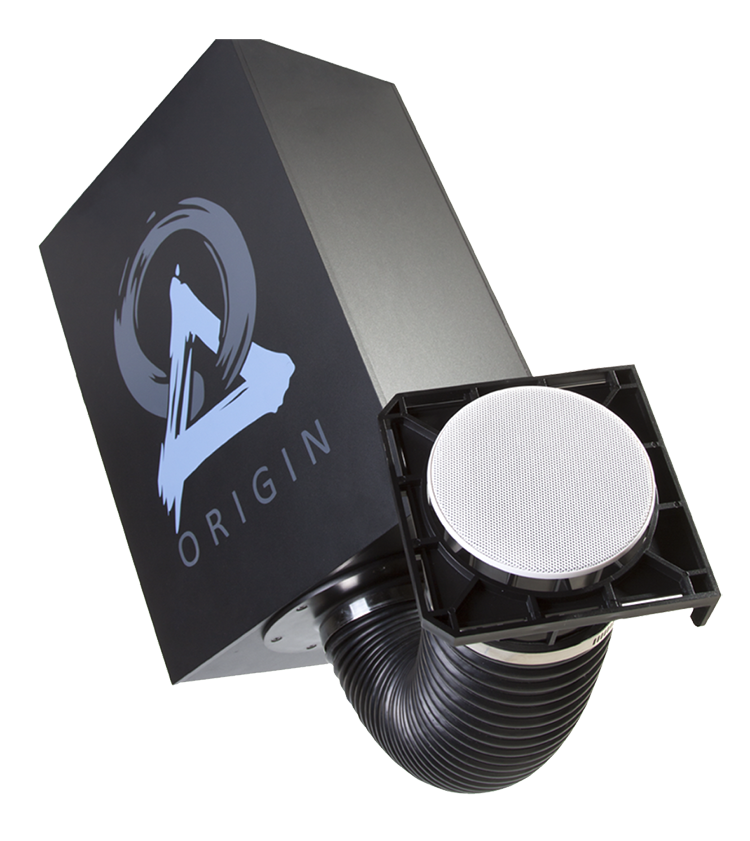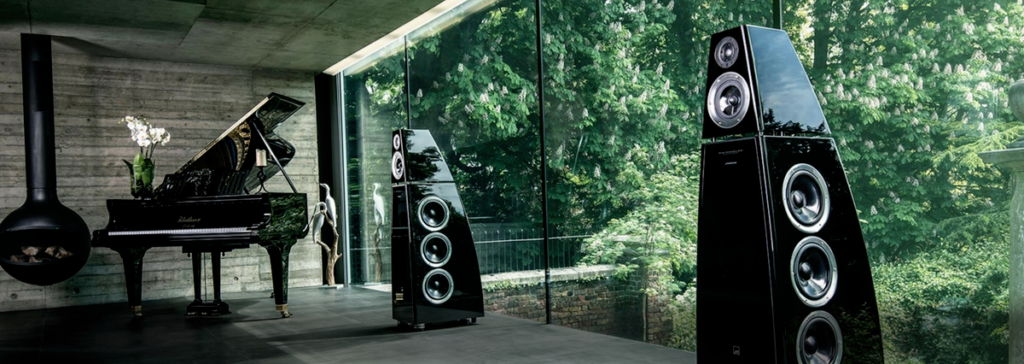
Cineluxe Basics | Speakers
Luxury speaker options run the gamut from freestanding works of art to literally invisible
by the Cineluxe staff
updated December 7, 2021
Once you’ve decided whether you want a large, traditional flat-panel TV or a projector for your entertainment system, you’ll next want to look into speakers. Here we’ll guide you through some of the options as well as discuss the most important things you need to think about when selecting an audio system.
Unlike TVs, projectors, and even electronics, which often become outdated after a few years due to the rise of new audio/video standards, the core technology for speakers has remained essentially unchanged for decades. So if you like the way a speaker looks and sounds when you purchase it, it will likely continue to please and be usable for many years to come.
That’s not to say that there have been no advancements in speaker technology. As mentioned in “What is a Luxury Entertainment System,” perhaps the biggest change is that hidden architectural speakers, which are designed to be installed in your walls or ceiling and painted to match the environment, now boast performance levels that were unheard of just a decade ago.
Take GoldenEar Technology’s Invisa Signature Point Source speakers, for example. These discrete in-walls deliver much the same performance as the company’s lauded in-room tower speakers, just without the big, black monolithic design. GoldenEar also makes some very nice, practically invisible in-ceiling speakers, so you could build a nearly complete Dolby Atmos surround sound system without seeing a single speaker in the room.
With the proliferation of high-quality architectural models, it’s likely your favorite speaker company offers one that will work as well as the GoldenEar, and certainly your integrator will have options to suggest. Companies like Meridian Audio have in-wall models that include their own amplification and DSP (digital signal processing). Wisdom Audio has models that use multiple drivers at the main frequencies to deliver cinematic audio levels across a wide range of seating positions. And Bowers & Wilkins offers in-walls that incorporate the company’s famed Nautilus tweeter design.
And if seeing even the hint of a micro-thin bezel in the wall or ceiling is too much for you or your decorator, there are truly invisible speakers that reside completely out of sight behind drywall. Sonance offers its aptly named Invisible Series and JBL Synthesis has its Conceal Series, both of which have zero impact on the room’s design.
For traditional surround sound, you’ll need five to seven speakers at ear level (depending on your preferences and the layout of your room). For Dolby Atmos or DTS:X, you can have even more ear-level speakers, if your space allows, plus two, four, six, or ten overhead speakers.
For either type of setup, you’ll also need one or more subwoofers, which usually come in big, unsightly boxes—but you do have some options for hidden subs, as well. James Loudspeaker has models that come in all shapes and sizes, from in-wall options designed to fit in a standard stud bay to larger boxed subwoofers that can be mounted in the attic or in a cabinet, with the bass then ported through a grille that looks like an HVAC vent. Origin Acoustics (shown at right) offers subs similar to the latter but with vents that open up into a port that looks virtually identical to can ceiling lights. And JL Audio makes both an 8-inch and 13.5-inch version of its highly-regarded Fathom subwoofer that can ensure that going in-wall doesn’t mean compromising on performance. You’ll probably want to consider a hidden subwoofer even if you opt for freestanding speakers, unless your designer has a creative way of incorporating a large, traditional subwoofer, say behind a baffle wall or acoustic paneling.
By the way, going with freestanding speakers—even if just for the primary front left and right channels—doesn’t mean having to give up on your design goals. Any number of luxury speaker manufacturers offer models that can be integrated into even the chicest interiors.
click on an image to enlarge
Focal’s Kanta line, for instance, comes in a variety of finishes that run the gamut from Gauloise Blue to Warm Taupe. And Meridian Audio will custom finish its DSP loudspeakers (shown at the top of the page) in virtually any color, including Papaya Orange to match your McLaren, Rosso Corsa to match your Ferrari, or Naples Yellow to match your Lamborghini. If Italian design is more to your liking, check out Sonus Faber’s Homage Tradition collection, a deliciously retro lineup that borrows much of its handcrafted design from the art of violin making. The company’s newer Sonetto Collection draws inspiration from the shape of the lute for its distinctive styling. And for a clean, contemporary look inspired by the lines and finishes of classic concert grand pianos, Steinway Lyngdorf offers a number of striking options.
These recommendations shouldn’t be viewed as the last word but are just a starting point in your exploration of what’s available in terms of ultimate-performance speakers that will either accentuate your carefully crafted décor or recede discreetly into the background. The point is, you don’t have to sacrifice on style to create a home cinema sound system that will positively embarrass your local cineplex.
© 2025 Cineluxe LLC


